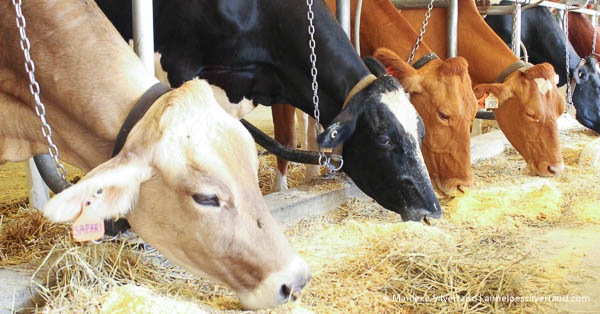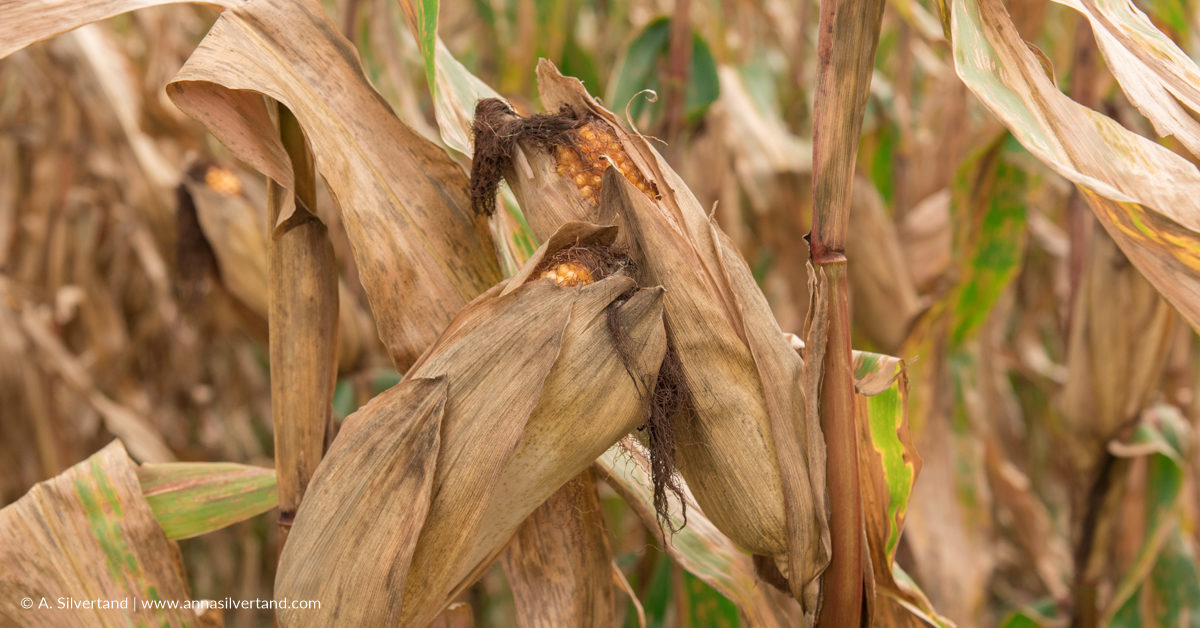Food is a basic human need and part of meeting the requirements for a balanced diet is protein. Most often, protein is provided through the consumption of animal products. With a growing global population, the demand for animal-based protein, particularly meat, is increasing.[1]FAO (2016). Fishery and aquaculture statistics [Online]. Available from: www.fao.org/fishery/static/Yearbook/YB2016_USBcard/booklet/web_i9942t.pdf [Accessed: 5 November 2018]. Resources, however, are limited and exploring alternatives to animal-based protein is increasingly relevant.
While a popular protein source, meat products are increasingly scrutinised because of their effect on the environment[2]Herrero, M., Henderson, B., Havlík, P., Thornton, P.K., Conant, R.T., Smith, P., Wirsenius, S., Hristov, A.N., Gerber, P.J., Gill, M., Butterbach-bahl, K., Valin, H., Garnett, T., Stehfest, E., Chalmers University of Technology, Department of Energy and Environment, Physical Resource Theory, Chalmers tekniska högskola & Institutionen för energioch miljö, Fysisk resursteori. (2016) ‘Greenhouse gas mitigation potentials in the livestock sector’, Nature Climate Change, vol. 6, no. 5, pp. 452-461., associated animal welfare issues[3]De Backer, C.J.S. & Hudders, L. (2015) ‘Meat morals: relationship between meat consumption consumer attitudes towards human and animal welfare and moral behavior’, Meat Science, vol. 99, pp. 68-74. and their impact on human health.[4]World Cancer Research Fund (2018) Diet, nutrition, physical activity and colorectal cancer [Online]. Available from: www.wcrf.org/sites/default/files/Colorectal-cancer-report.pdf [Accessed: 5 November 2018]. Due to these and other concerns, researchers and chefs have been looking for alternatives to animal-based protein. Well-known alternatives are plant-based meat replacements or, in some parts of the world, insects.
Aside from existing meat protein alternatives, scientists are trying to develop entirely new alternatives like cultured meat, better known as lab-grown meat. Lab-grown meat is lab-grown muscle tissue created from animal stem cells[5]Post, M.J. (2012) ‘Cultured meat from stem cells: Challenges and prospects’, Meat Science, vol. 92, no. 3, pp. 297-301. and could be a solution to some of the issues surrounding meat consumption and production.
Meat Consumption
Meat is one of the main protein sources for humans and can provide several macronutrients and micronutrients that are part of a healthy diet. However, how much of a person’s daily protein intake comes from meat depends on factors such as disposable income and cultural background. In some parts of the world, meat is only a small component of the average diet, while in other parts, it is consumed in abundance.[6]Neumann, C., Demment, M.W., Maretzki, A., Drorbaugh, N. & Galvin, K. (2010). ‘The Livestock Revolution and Animal Source Food Consumption’ in Steinfeld H., Mooney H., Schneider F., & Neville L., (eds.). Livestock in a changing landscape. Vol. 1., 18239-18238.

While people may eat meat for different reasons, the majority of people consumes meat. How much and what kind of meat depends on, among others, access to types of meat, financial means and social or moral convictions.[7]FAO (2016). Fishery and aquaculture statistics [Online]. Available from: www.fao.org/fishery/static/Yearbook/YB2016_USBcard/booklet/web_i9942t.pdf [Accessed: 5 November 2018].
However, as the global population grows, so does the sub-group with the financial means to purchase meat. Even though recommended amounts for meat consumption are modest[8]https://www.canada.ca/content/dam/hc-sc/migration/hc-sc/fn-an/alt_formats/hpfb-dgpsa/pdf/food-guide-aliment/serving_meat-viande_portion-eng.pdf, the FAO predicts that the demand for animal-based protein will almost double by 2050.[9]FAO (2011) World Livestock 2011. Livestock in food security [Online]. Available from: www.fao.org/docrep/014/i2373e/i2373e.pdf [Accessed: 5 November 2018].
Meat and Health
Due to a growing demand for meat and an increasing population, humans and animals are forced to live in growing proximity to one another. This proximity increases the chances of disease outbreaks and a rapid spread of diseases between species.[10]FAO/OIE/WHO Joint Scientific Consultation (2010) Influenza and other emerging zoonotic diseases at the human-animal interface [Online]. Available from: www.who.int/influenza/human_animal_interface/I1963E_lowres.pdf [Accessed: 5 November 2018]. In addition, to prevent such outbreaks and to stimulate muscle growth, animals receive antibiotics, which in turn can contribute to antibiotic-resistant bacteria that can cause illnesses in humans.[11]Ventola, C.L. (2015) ‘The antibiotic resistance crisis: part 1: causes and threats’, P & T : a peer-reviewed journal for formulary management, vol. 40, no. 4, pp. 277.
Potential disease outbreaks are not the only health concerns regarding meat consumption. Various types of meat are suspected of causing adverse health effects and have been associated with the prevalence of several types of cancer.[12]World Cancer Research Fund (2018) Diet, nutrition, physical activity and colorectal cancer [Online]. Available from: www.wcrf.org/sites/default/files/Colorectal-cancer-report.pdf [Accessed: 5 November 2018].
Animal Welfare
As briefly mentioned, livestock is often kept in disease-inducing environments. These environments are conducive to maximising profits but can result in poor animal welfare conditions. While not a consideration for everyone, animal welfare is something many consumers and policymakers consider. In some parts of the world, this consideration has led to laws that protect animal welfare and has made consumers more aware of the impact of their food choices.[13]Potts, A. (ed). (2016) ‘Meat Culture’. Leiden, The Netherlands: Brill.
Environmental Impact
When breeding large numbers of animals, not only animal suffering is common. The production of waste is as well.[14]Potts, A. (ed). (2016) ‘Meat Culture’. Leiden, The Netherlands: Brill.[15]Bujak, J.W. 2015, ‘New insights into waste management – Meat industry’, Renewable Energy, vol. 83, pp. 1174-1186. The type of waste created ranges from animal waste like manure to by-products such as greenhouse gasses and everything in between. In turn, all these waste streams have their own impact on the environment.[16]Oba, G., Steinfield, H., Mooney, H.A., Schneider, F. and Neville, L. E. (2011). ‘Livestock in a changing landscape: Drivers, consequences, and responses’ in Gerber, P., Mooney, H. A., Dijkman, J., Tarawali, S. and de Haan, C. (eds.). Experiences and Regional perspectives Vol. 2. Island Press 1-7.

The environmental impact is not limited to increased waste streams. Large amounts of water and land are used to grow animal feed, yielding a relatively low amount of food. These resources can alternatively be used to feed people by directly growing plant protein for human consumption. [17]Deutsch, Lisa & Falkenmark, Malin & Gordon, Line & Rockström, Johan & Folke, Carl (2010). ‘Water-mediated ecological consequences of intensification and expansion of livestock production’ in Steinfeld, H., Mooney, H., Schneider, F. (eds.). Livestock, Environment and Development Initiative — LEAD at FAO, SCOPE program on Consequences of Industrialized Animal Production Systems, and the Swiss College of Agriculture. Vol. 1. Island Press, 97-110.[18]Potts, A. (ed). (2016) ‘Meat Culture’. Leiden, The Netherlands: Brill. Instead, already strained resources are used for breeding livestock and will continue to deplete until there is a substantial alternative to meat.
Meat Alternatives
Several alternatives to meat, however, are available. Well-known alternatives are plant-based products made from high protein plants like beans, grains, vegetables, nuts, seeds and soy.[19]FDA (2016) Nutrition Facts Label [Online]. Available from: www.accessdata.fda.gov/scripts/InteractiveNutritionFactsLabel/#protein [Accessed: 5 November 2018]. When considering the environment, plant-based alternatives are desirable. The protein yield is high, and compared to meat, the average amount of fossil energy input required is less than ten per cent. [20]Pimentel, D. & Pimentel, M. (2003) ‘Sustainability of meat-based and plant-based diets and the environment’, American Journal of Clinical Nutrition, vol. 78, no. 3, pp. 660S-663S.
Aside from plant-based protein, there are also animal-based alternatives to meat with a lower environmental impact. Examples are dairy products and seafood. While these products also struggle with animal welfare issues, both provide consumers with protein but have a significantly smaller environmental impact.[21]FDA (2016) Nutrition Facts Label [Online]. Available from: www.accessdata.fda.gov/scripts/InteractiveNutritionFactsLabel/#protein [Accessed: 5 November 2018].
Lab-grown meat
Another alternative that is under development is cultured meat, also known as lab-grown meat. Because the research is still in its early stages, there are, as of yet, no standards for producing lab-grown meat.[22]Arshad, M.S., Javed, M., Sohaib, M., Saeed, F., Imran, A. & Amjad, Z. (2017) ‘Tissue engineering approaches to develop cultured meat from cells: A mini-review’, Cogent Food & Agriculture, vol. 3, no. 1. Production methods currently most successful use a technology that stimulates animal stem cells to develop into muscle cells.[23]Stephens, N., Di Silvio, L., Dunsford, I., Ellis, M., Glencross, A. & Sexton, A. (2018) ‘Bringing cultured meat to market: Technical, socio-political, and regulatory challenges in cellular agriculture’, Trends in Food Science & Technology, vol. 78, pp. 155-166.
While this lab-grown muscle meat does not provide a mouthfeel and flavour that is similar to meat obtained from a real-life animal, researchers are working on improving this by adding fat cells that will influence the taste and structure of the lab-grown meat.[24]Mattick, C.S., Landis, A.E., Allenby, B.R. & Genovese, N.J. (2015) ‘Anticipatory Life Cycle Analysis of In Vitro Biomass Cultivation for Cultured Meat Production in the United States’, Environmental Science and Technology, vol. 49, no. 19, pp. 11941-11949.
Challenges and Uncertainties
There are still many uncertainties surrounding lab-grown meat, and it is difficult to predict all the potential risks that will arise once lab-grown meat becomes part of the standard diet. A new method of producing meat will require strict monitoring and new laws and regulations to guarantee food safety.
Additionally, because lab-grown meat is still in the developmental stage, it is difficult to predict the environmental footprint for large-scale production. Several studies, however, have tried to estimate the environmental impact, and results indicate that the environmental burden will be significantly lower than it currently is for traditionally produced meat.[25]Tuomisto, H.L. & Teixeira De Mattos, M. Joost (2011) ‘Environmental impacts of cultured meat production’, Environmental Science and Technology, vol. 45, no. 14, pp. 6117-6123.[26]Alexander, P., Brown, C., Arneth, A., Dias, C., Finnigan, J., Moran, D. & Rounsevell, M.D.A. (2017) ‘Could consumption of insects, cultured meat or imitation meat reduce global agricultural land use?’, Global Food Security, vol. 15, pp. 22-32.[27]Mattick, C.S., Landis, A.E., Allenby, B.R. & Genovese, N.J. (2015) ‘Anticipatory Life Cycle Analysis of In Vitro Biomass Cultivation for Cultured Meat Production in the United States’, Environmental Science and Technology, vol. 49, no. 19, pp. 11941-11949.
Solutions
The current meat production methods create a lot of food waste throughout all stages of the production chain.[28]Potts, A. (ed). (2016) ‘Meat Culture’. Leiden, The Netherlands: Brill. Luckily, waste valorisation and recycling techniques can be implemented to create a more efficient and streamlined meat production process. Not just in the pre-consumer production chain but also on the consumer end, improvements are possible.[29]Secondi, L., Principato, L. & Laureti, T. (2015) ‘Household food waste behaviour in EU-27 countries: A multilevel analysis’, Food Policy, vol. 56, pp. 25-40.
Global Differences
When looking for an alternative to meat, there is no one-size-fits-all solution. In Europe, the main sources of protein are meat and dairy[30]European Environment Agency (2017) Food consumption – animal based protein [Online]. Available from: www.eea.europa.eu/airs/2017/resource-efficiency-and-low-carbon-economy/food-consumption-animal-based [Accessed: 5 November 2018], while in Asia, the main sources of protein are nuts, legumes and insects.[31]Van Estrick, P. (2008) ‘Food Culture in Southeast Asia‘. Greenwood. Due to these differences, lab-grown meat might be a great alternative in some parts of the world while in others, it will not be accepted. For this reason, it is important to look further than lab-grown meat to solve the global dietary protein shortage and counteract the negative impact the meat industry has on the environment. One thing is certain, though, consumers will only accept an alternative to meat if it tastes good.
References
Leave a Reply
You must be logged in to post a comment.